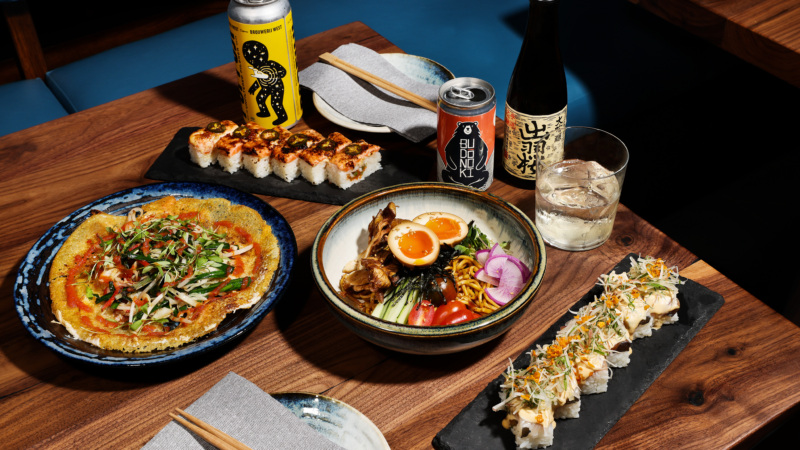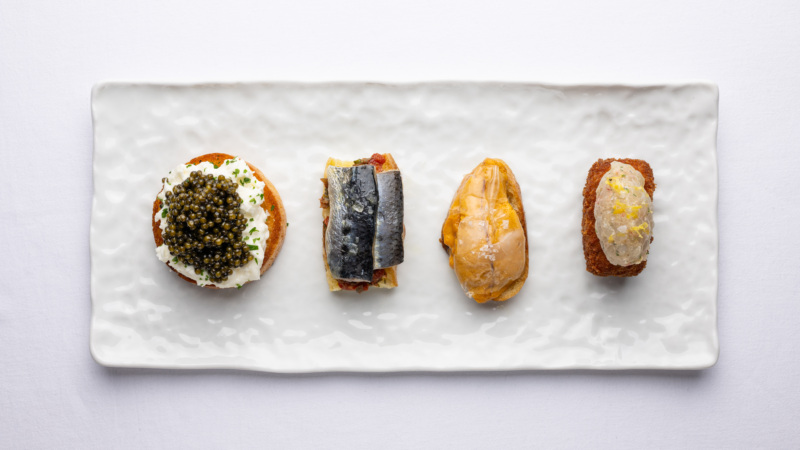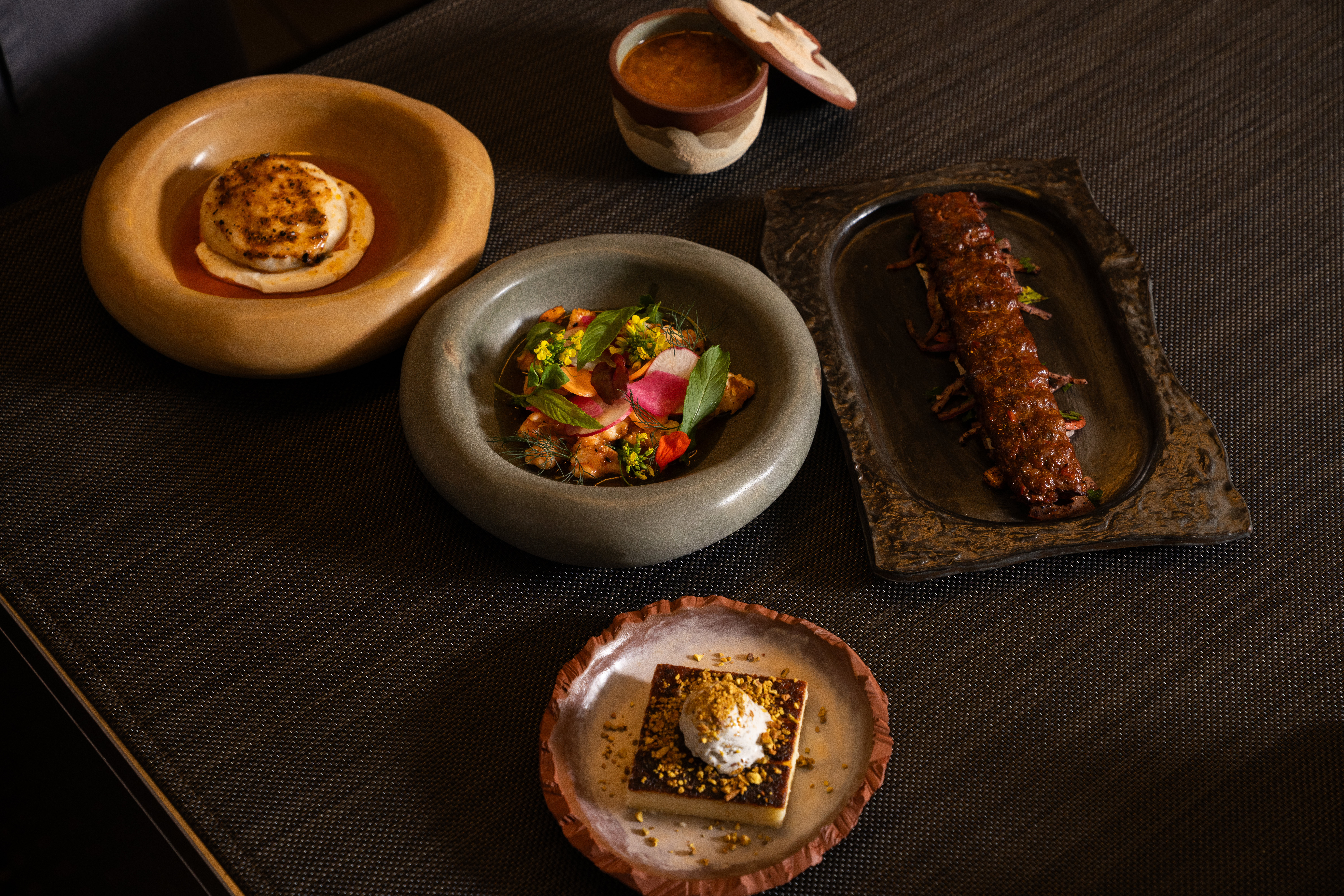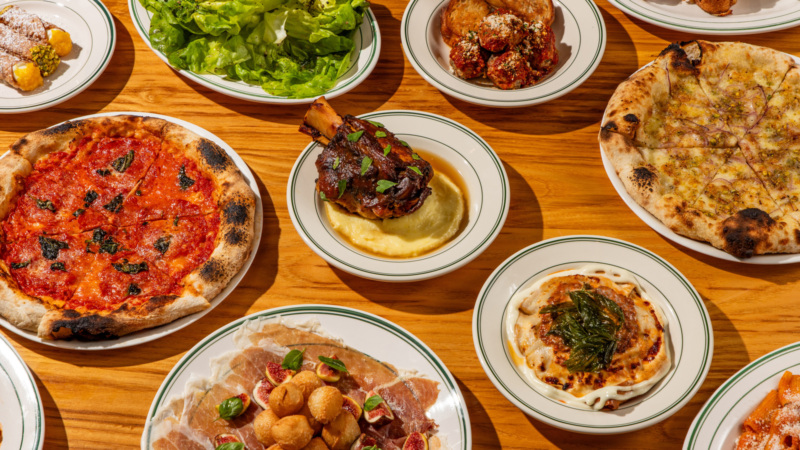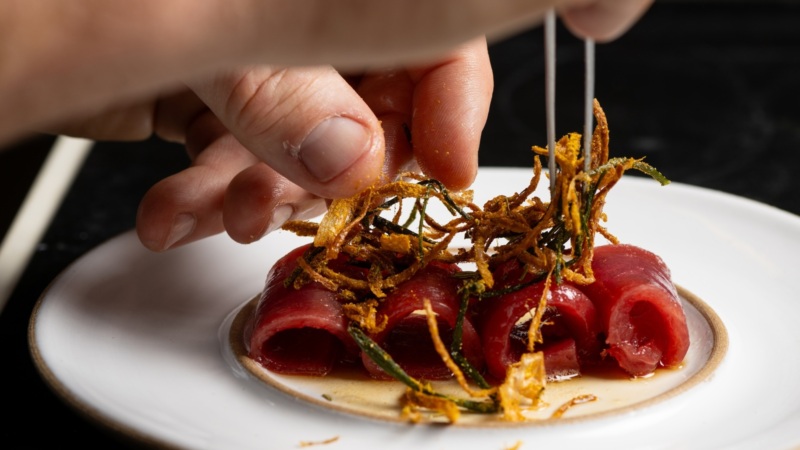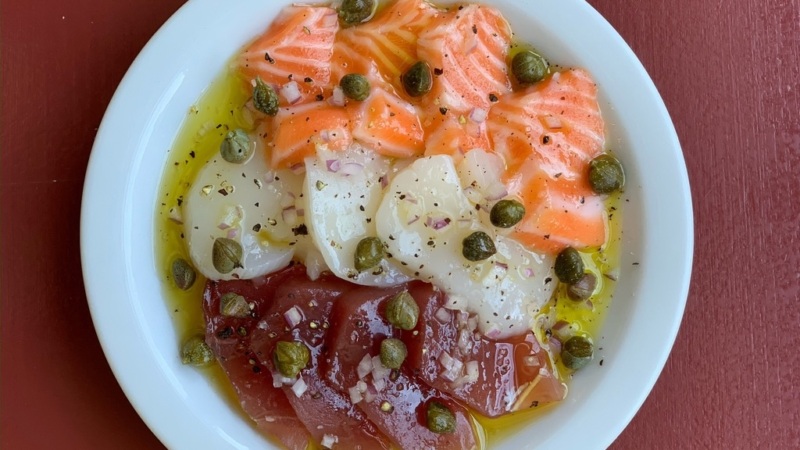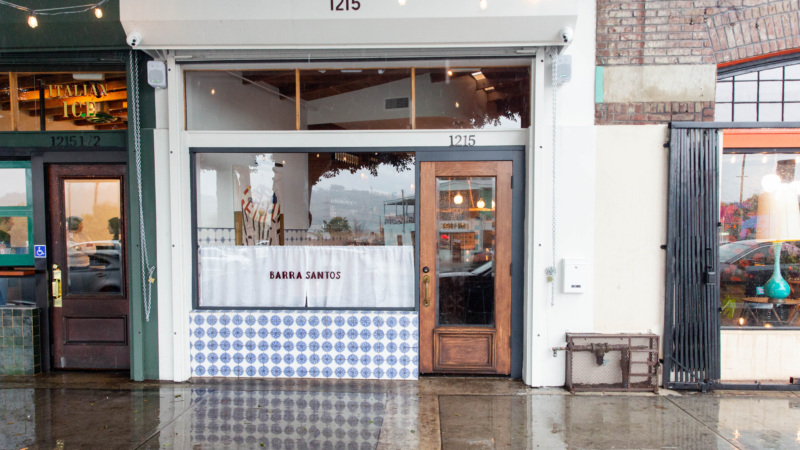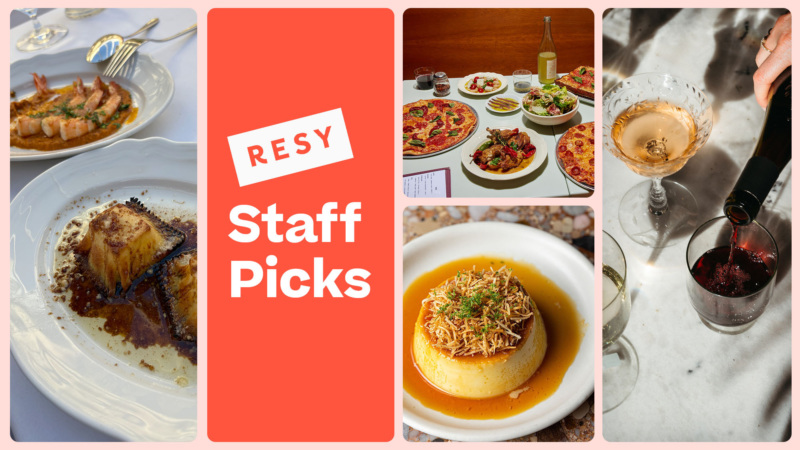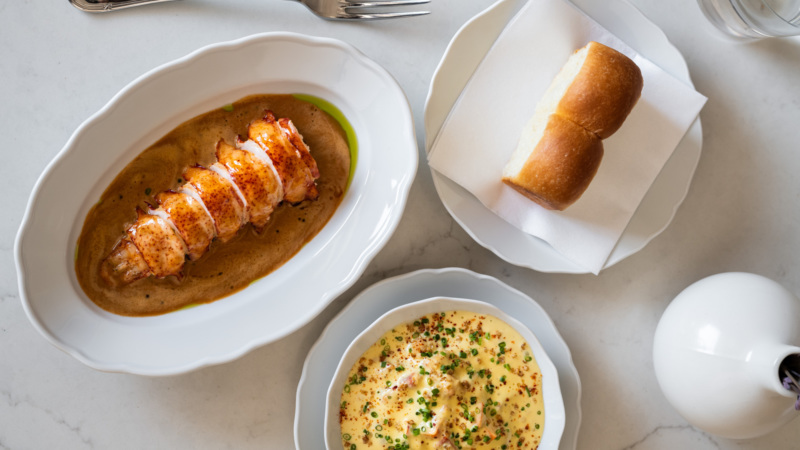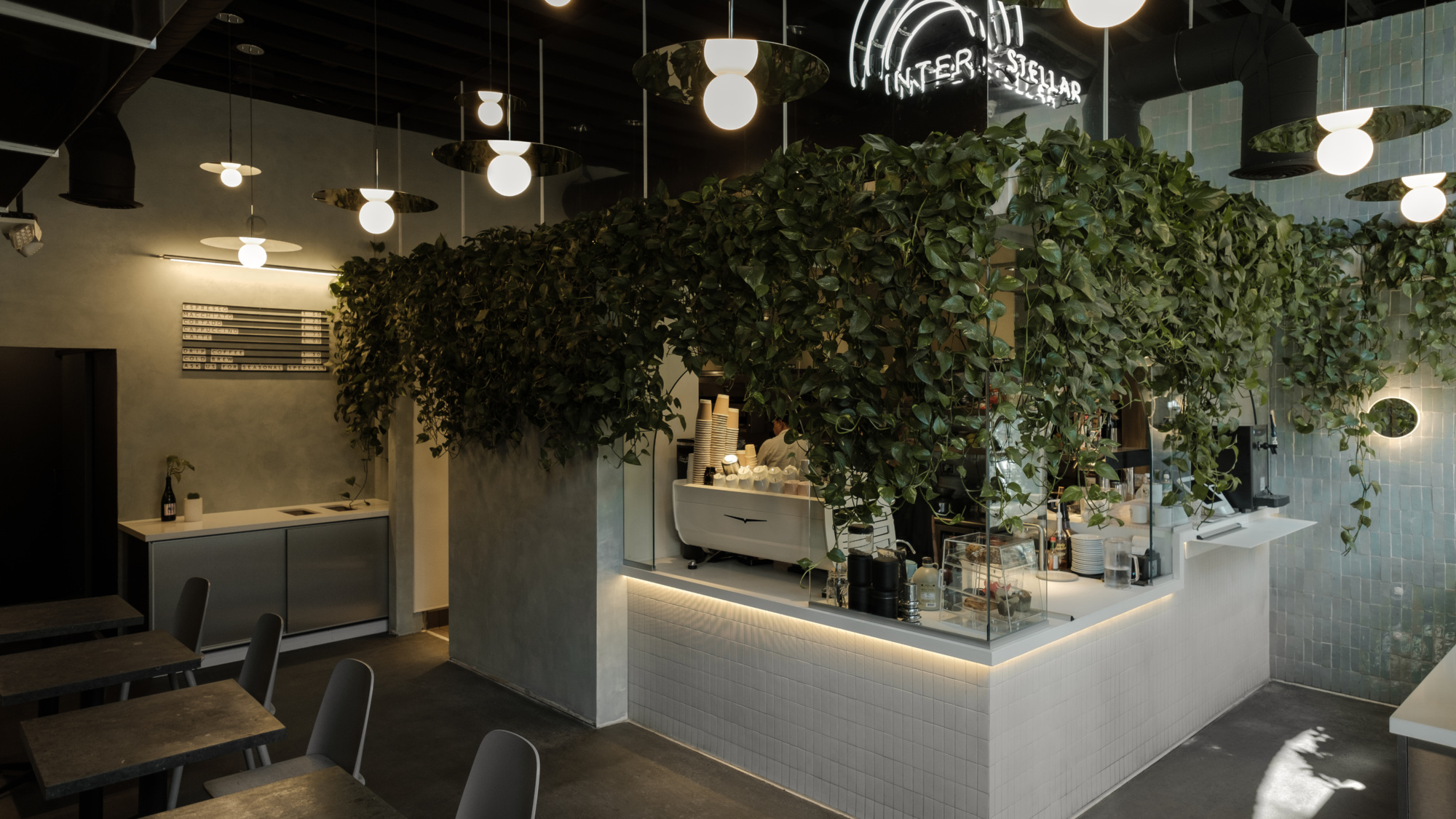
Five Must-Orders at Interstellar, Santa Monica’s Favorite All-Day Cafe
When wife-and-husband team of Angie and Daniel Kim opened Interstellar in April of 2020, weeks into the pandemic, they became known for high-quality coffee and grab-and-go service during the day. Now, nearly three years later, they’ve finally been able to expand to the full-service dining experience they’ve always envisioned, which includes dinner Thursday through Saturday.
The Kims named their restaurant in honor of the space between the Korean and American cultures with which they both identify. Their menu is a delicious cosmic collision, too, with a little stardust from other global influences sprinkled in for good measure. Chef Angie serves hearty comfort food with her own twist, mashing up Korean, Japanese, Italian, and American flavors, while Daniel leads the beverage program, transitioning from daytime Onyx Coffee Lab coffee and tea to wine, beer, sake, and shochu-based cocktails.
The all-day space has a bright look and welcoming feel, complete with a large patio space and dog-friendly menu inspired by the fresh meals the Kims make for their 18-year-old yorkie-poo Sephie. (“She eats better than us,” Angie says with a laugh.) Pups aside, here are some highlights from the newly expanded human menu.
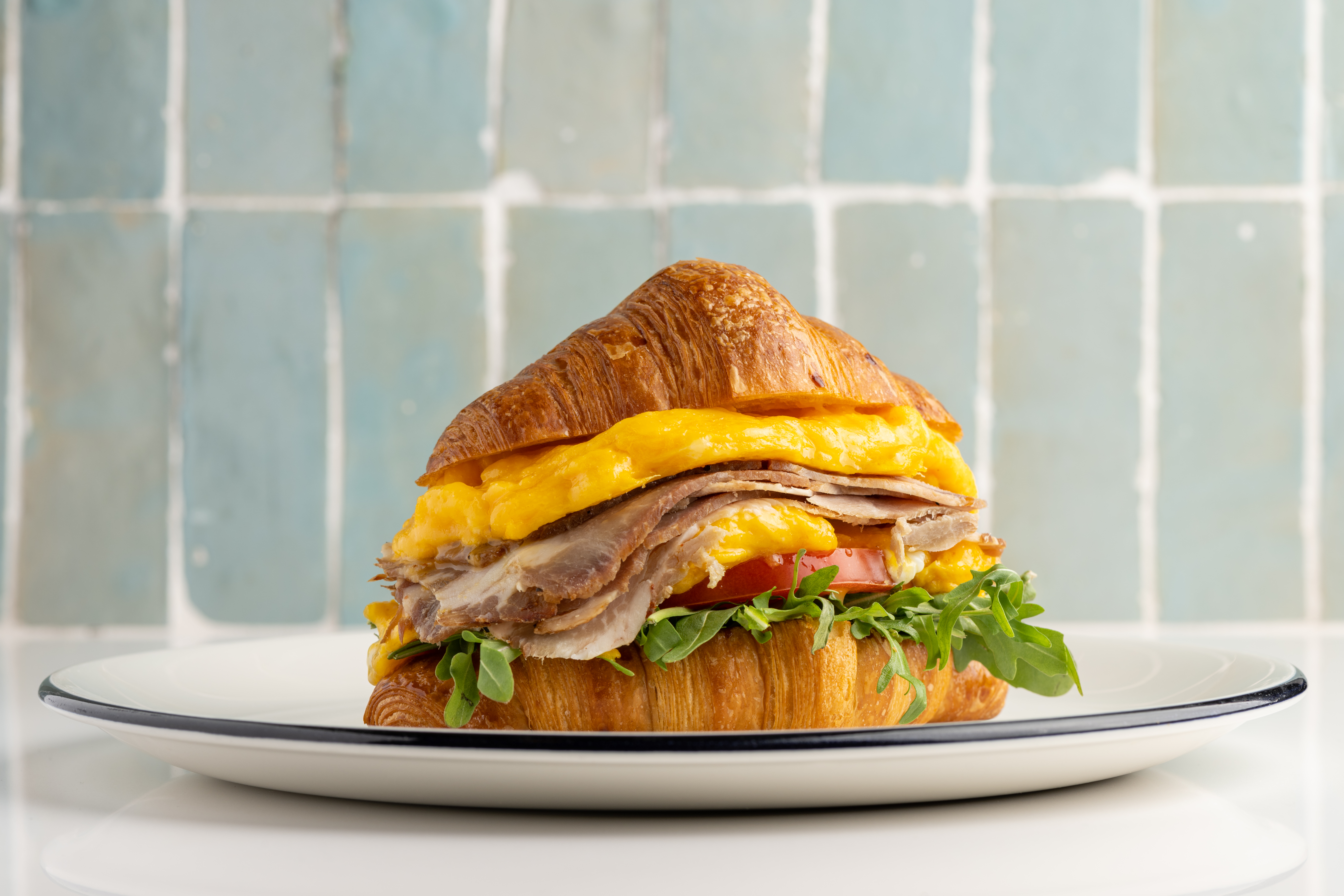
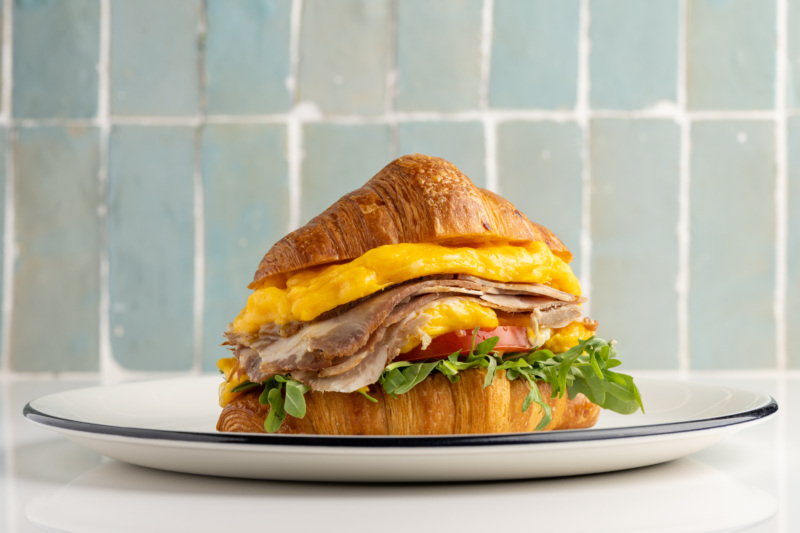
Breakfast Croissant
“We’ve had a breakfast croissant on the menu since we were just serving takeaway, but the highlight here is that we’ve switched from using D.O.P Parmacotto ham to making it in-house. We slow-cook a boneless pork butt for 24 hours, infusing it with red chile flakes and orange extract and caramelizing it with brown sugar and honey to cook overnight. The next day we roast it off in the oven for a nice sear and slice it really thin for service. We’re trying to battle with food costs going up and down, so I thought it would be a good opportunity to come up with our own ham.
I made ham for the first time by accident with our turkey for Thanksgiving. I meant to make a turkey roast, but I switched the proportions for sugar and salt, so I made a turkey ham with a 30-hour cook time. After that first mistake went on the menu and was a hit, then I was inspired to make this one.
If we ever expand in the future, we’d love to make our own croissants, but right now we are sourcing them fresh daily from FarmShop. We get our eggs from Chino Valley, and they have these nice dark yolks. We scramble the eggs with cheddar and finish it with some fresh arugula and citrus honey vinaigrette to brighten up the sandwich.”
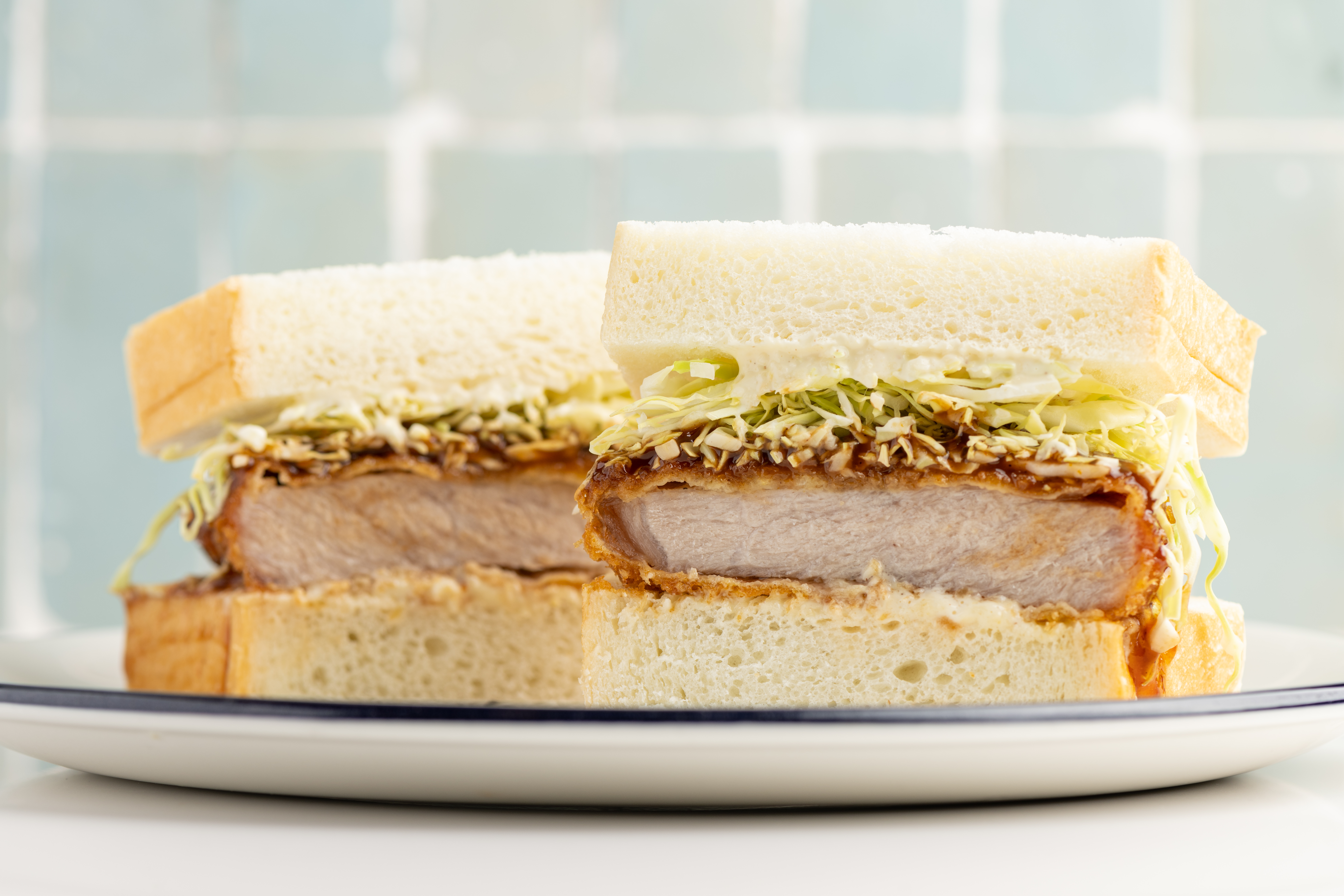
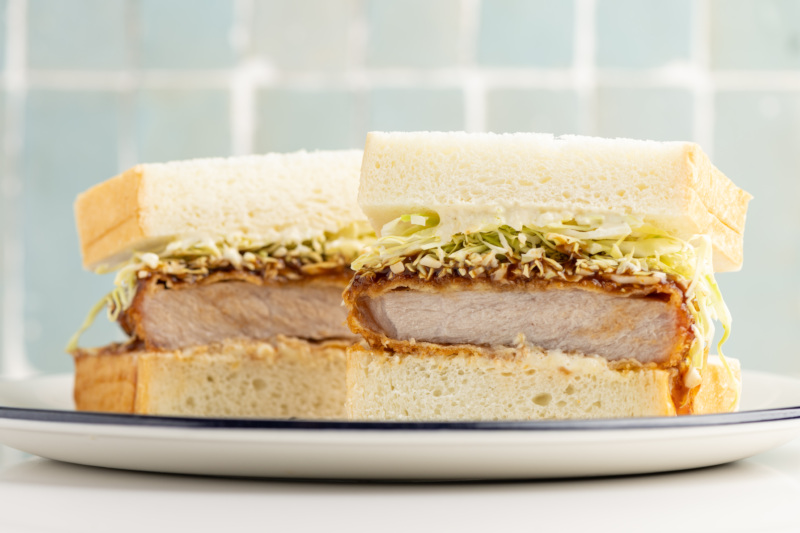
Pork Loin Sando
“The key to a great sandwich is the bread, and we use shokupan milk bread from Ginza Nishikawa. We sampled a loaf of their bread after meeting somebody from the bakery at a sushi restaurant. We had been looking for a milk bread for a long time, but we weren’t able to find one that was dense enough but kept its softness and flavor profile. I knew instantly that this is what we were searching for. They’re really popular and always sold out – but we connected with the owners, Noriko and Hiroko, and now we are their exclusive wholesale account. Their bread is just phenomenal and they put such detail into all of their ingredients. On the first day, the bread is best for sandwiches, the second day is best for toasts and the third day is for desserts.
We use Niman Ranch pork loin for the sandwich. The most important part is pounding the pork loin a lot to tenderize it, but not too thin. Then we use a vacuum sealer with salt and pepper to lock in the flavor. When the order comes in, we bread each loin in fresh panko from Japan, mixed with egg so it sticks. We keep the condiments simple — just house tonkatsu sauce and freshly grated sliced cabbage dressed with fresh lime. And we make our own parmesan aioli that we put on both slices of bread to help bring all the flavors together. It’s only sold for lunch from 11 a.m. to 3 p.m. because we tend to run out. We have both pork and chicken katsu, but I think the pork is more flavorful.”
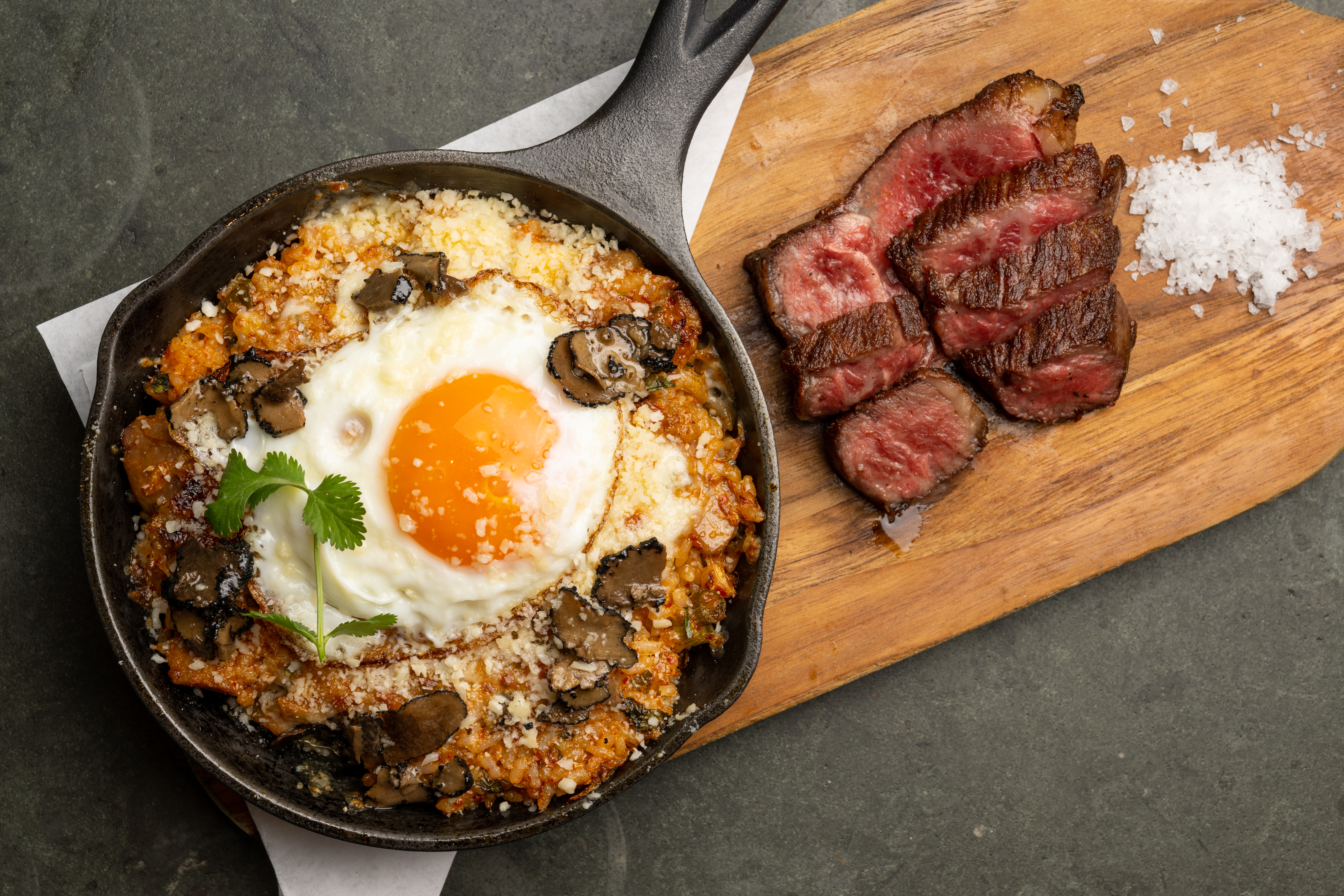
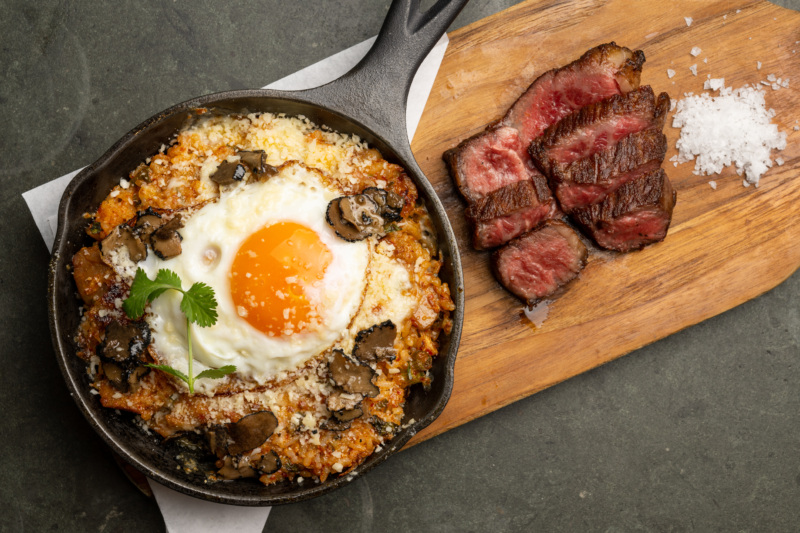
Kimchi Fried Rice with Wagyu
“This is a fusion style of traditional kimchi fried rice with my grandma’s kimchi recipe. I grew up in Seattle, and my grandma had a little garden that she’d pull from to make fresh kimchi, so I have a lot of good memories associated with it. There are a lot of different ways to make kimchi, but her ratio of red pepper flakes (gochugaru), fish sauce, salt, and garlic is what makes it different. I can’t make it exactly like hers no matter how much I try, but it is close! In many Korean recipes there is actually no written recipe, it’s just eyeballed. There’s a word in Korean for this called “sohn mat” (손맛), which translates to “taste of hand.”
Daniel’s mother is also a chef and she had a lot of background in the culinary industry, so she taught us how to pull this dish together. We marinate diced pork cubes overnight in a soy sauce base and then stir fry the pork, rice, green onion, kimchi, and fried egg in a skillet before topping it off with parmesan and Italian black truffle slices. We add some chile flakes and our house spicy sauce – a mix of gochujang, soy, sesame oil, and sugar that we utilize in several different dishes – so the fried rice definitely has a kick.
There’s an option to add a Japanese wagyu supplement, which is served on the side with Maldon salt. The wagyu adds a nice richness to balance the spiciness. This is definitely comfort food and one we have – minus the wagyu – for family meal on cold days.”
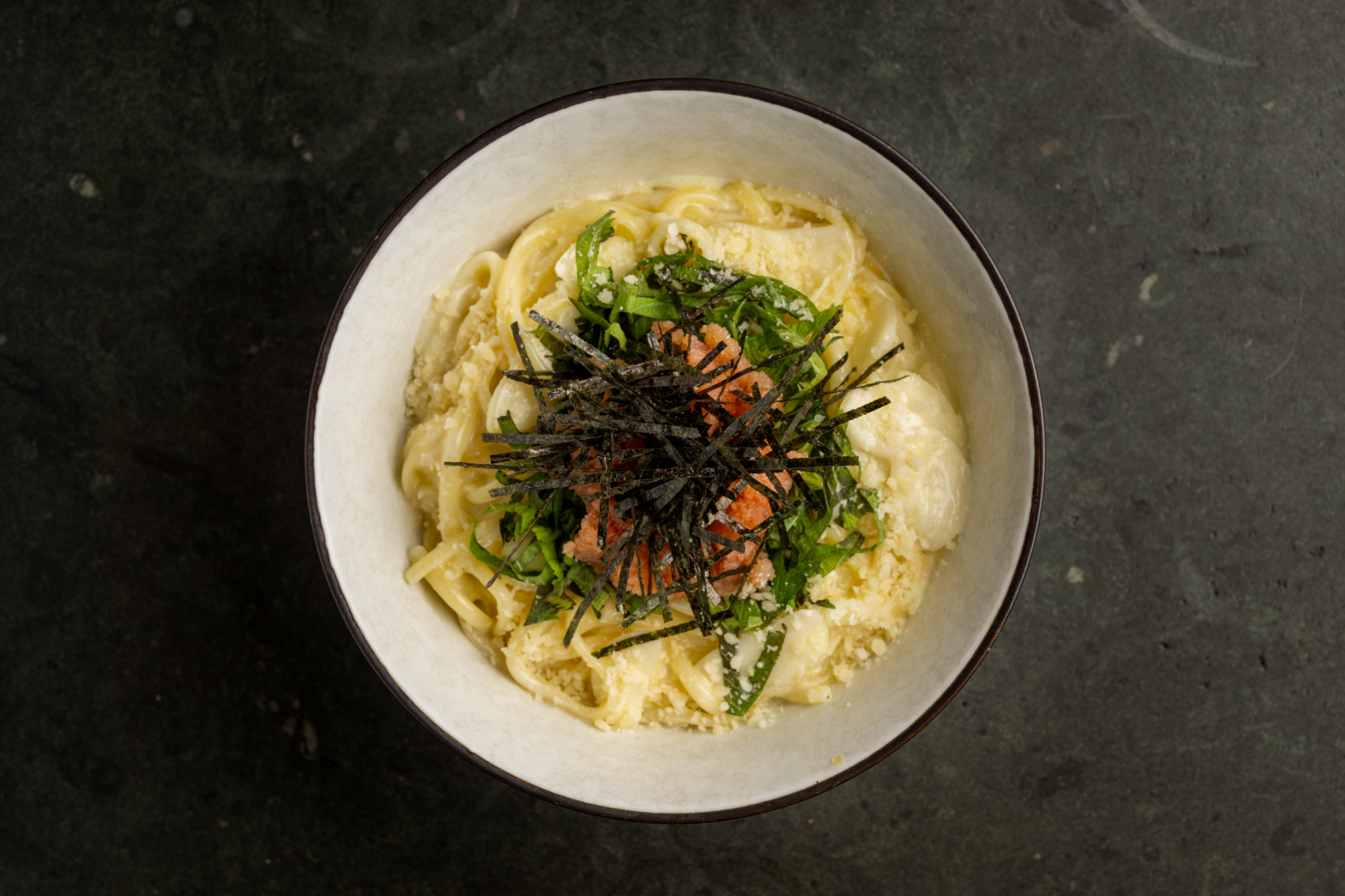
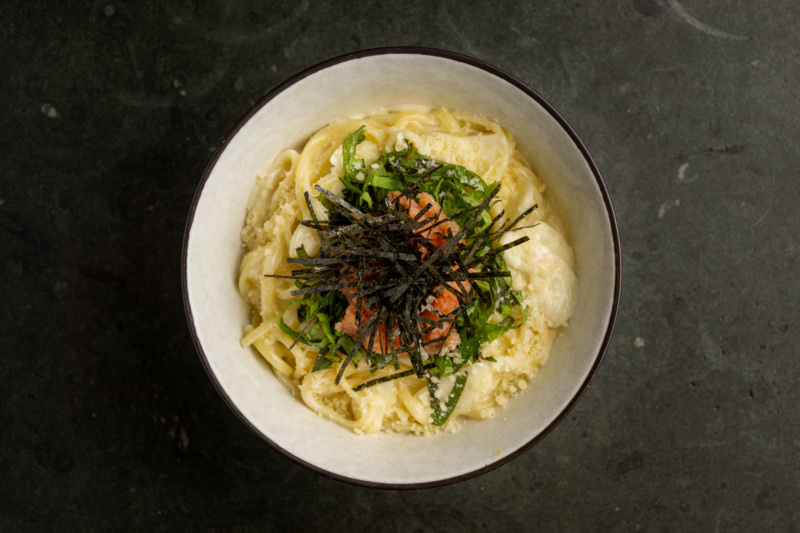
Creamy Mentaiko Pasta
“I grew up loving mentaiko and we get ours from Japan. Our mentaiko linguine is not too creamy, not too heavy, and not too salty or sweet…it’s right in the middle. We serve it with shiso leaf and Japanese nori cut really thin. The shiso adds a minty zesty flavor and freshness to the creamy dish, while the nori adds a mildly salty taste and contrasting texture.
We use freshly cooked De Cecco linguine and make the creamy parmesan sauce to order. We slice garlic and toast it in oil to mix into the pasta, too. I first started serving this by blending the mentaiko into the sauce but now we sprinkle it on top so the customer can scoop it up with the pasta if they like, or mix it altogether at their discretion. I don’t like to mix it — I like the little chunks I get because the mentaiko has a little spice to it.”
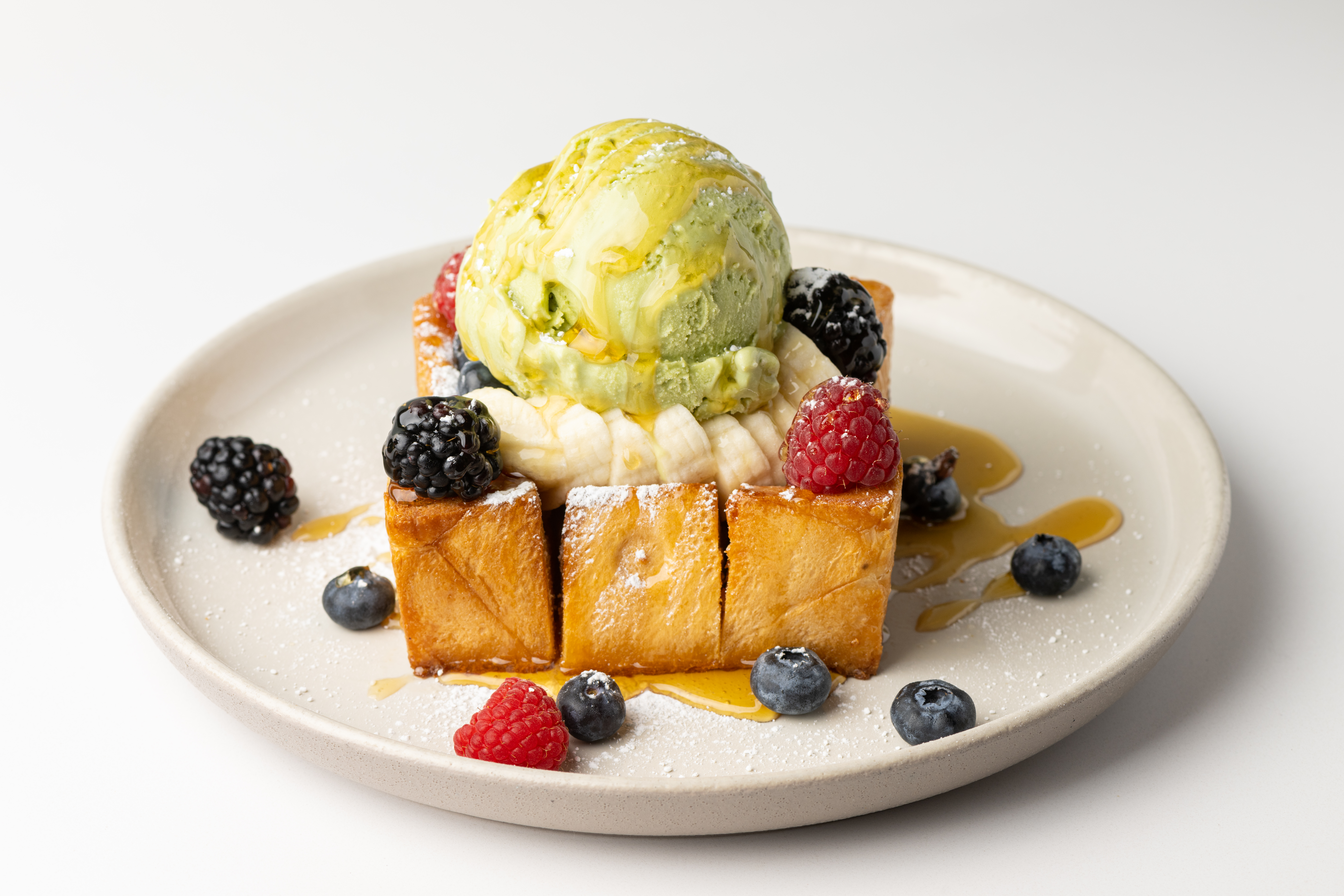
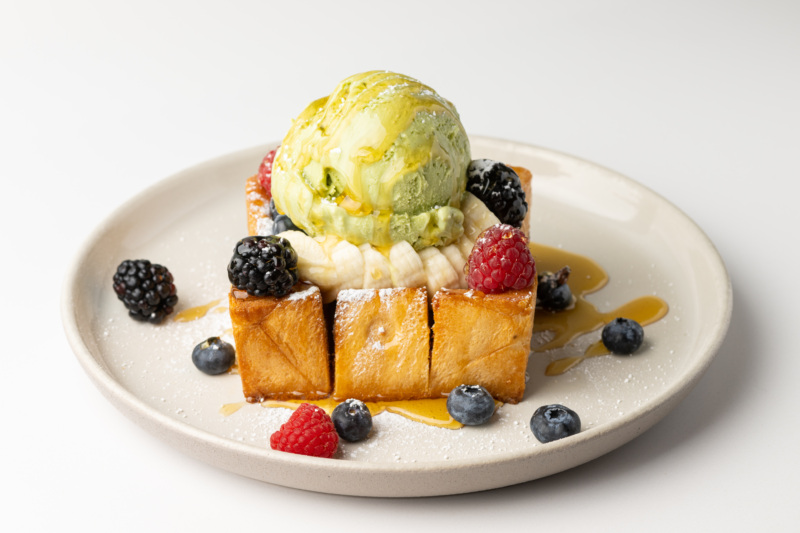
Honey Butter Toast
“Some people think bread needs to be fresh and eaten the same day, but we use two- or three-day old Ginza Nishikawa shokupan for this. It’s a very thick toast so it needs to keep its shape. The first day it’s too soft and squishy so it’s harder to cut. For me, the sweetness is more pronounced by the second or third day.
We make these cuts like a checker board that go three-quarters of the way through the top of the bread, so we can put our honey maple butter in between the lines to permeate it. Then we cook it in the oven for a few minutes and pop it in the Salamander broiler for a nice brown sear on top. We top it off with berries from the Santa Monica Farmers’ Market, a scoop of housemade gelato, and a drizzle of honey and powdered sugar to finish.
This is our most decadent dessert, and more than enough for four people to share. I like our honey butter toast with vanilla gelato because vanilla bean doesn’t overpower the toast, but it’s good with ube and matcha gelato, too.”
Amber Gibson is a journalist specializing in travel, food, and wine. Her work has appeared in Departures, Food & Wine, Saveur, Bon Appétit, and Travel + Leisure. Follow her here; follow Resy too.


